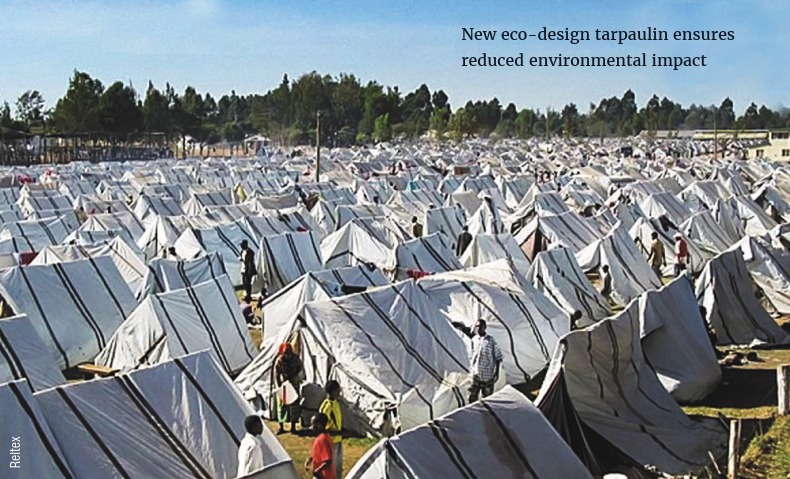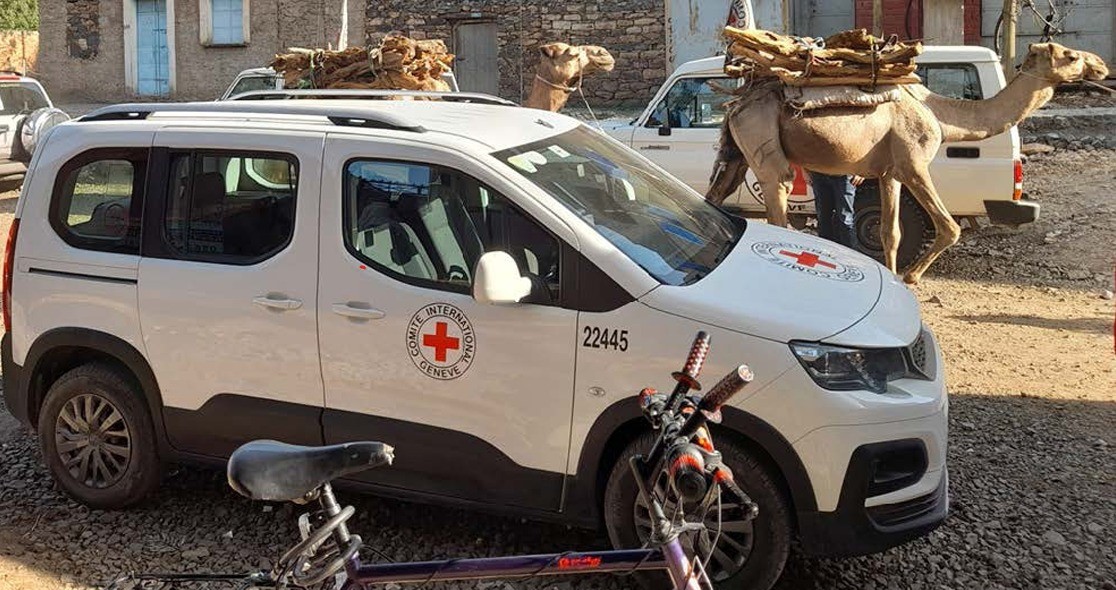The ICRC, which helped set up the Climate and Environment Charter for Humanitarian Organizations, is committed to reducing its direct and indirect greenhouse gas emissions by 50 per cent by 2030.
This in itself is a sizeable challenge.
Adding to the complexity is the fact that roughly half of the ICRC’s carbon footprint is generated by external suppliers in the production of food and relief items for communities affected by armed conflict or violence.
In short, the ICRC’s supply chain is an emissions hotspot.
Three years ago the ICRC launched the Sustainable Supply Chain Alliance (SSCA) in collaboration with the International Federation of Red Cross and Red Crescent Societies (IFRC) and funded by the Norwegian Red Cross.
The initiative is aimed at improving the environmental, social and economic impact of supply chains across the International Red Cross and Red Crescent Movement.
The SSCA’s priorities include:
- raising awareness of the importance – and potential benefits – of integrating sustainability in supply chains
- developing a common methodology and a free carbon accounting tool for the humanitarian sector – Humanitarian Carbon Calculator (HCC)
- introducing more sustainable products for affected communities (e.g. an eco-design tarpaulin and an alternative polypropylene bag)
- ensuring responsible procurement policies and finding replacements for the least sustainable products
- increasing sustainability among suppliers through a code of conduct
- optimizing vehicle fleets (“the right car for the right job”)
- creating special operational procedures and a tracking system for vehicle workshop waste management
- developing sustainable fleet training for the sector
- sharing best practice among SSCA stakeholders.
Evaluating progress
Earlier this year a mid-term review of the SSCA was completed. So what did it find?
“So far we have made good progress, but we still have a long way to go before we can fulfil our commitments to reduce emissions by 50 per cent, compared to 2018 levels,” says Carmen Garcia Duro, SSCA project manager, who is based within the ICRC’s Logistics Division.
“For me, two big achievements have been the development of the carbon calculator and creating the structure for the different logistics clusters – transport, fleet, procurement, etc. – to better start tracking and reducing our emissions. The evaluation also confirms the importance of working closely together as a sector.”
Garcia Duro underlines the close collaboration between the Logistics Division and the ICRC’s Essential Services Division – responsible for humanitarian assistance – when it comes to the procurement of sustainable food and relief items.

This is reflected in the ICRC’s involvement in two SSCA research and development projects linked to food and relief items:
- Eco-design tarpaulin (UNHCR/IFRC/ICRC): Currently being tested in the field, it uses 14 per cent less plastic (polyethylene), is more resistant to tears and lasts twice as long.
- Alternative Polypropylene Bag (ICRC/UNHCR/WFP): Headed by the ICRC, this project is investigating innovative, sustainable solutions to the polypropylene (PP) woven bags used for packaging food and relief items. In 2018 the World Food Programme used at least 64 million PP woven bags.
Product review
The ICRC has also reviewed the sustainability of all products that it distributes to affected communities. The aim being to find alternative solutions where a sustainability risk is identified.
More than 40 item categories were covered, ranging from canned food and seeds to hygiene materials and packaging. The list includes recommendations on how to enhance their sustainability.
One of the outcomes is that the volume of hygiene parcels is being reduced by 40 per cent thanks to the introduction of items such as solid shampoo, which is currently being piloted.
The kit’s content has become more environmentally friendly by including toothbrushes with 50 per cent less plastic, recycled toilet paper, reducing unnecessary packaging, plus other improvements.
“We are increasingly discussing with suppliers how to source more sustainable products and encouraging them to be part of the solution,” says Garcia Duro.
“Conversations with suppliers have already led to some new products being sourced – for example, a syringe with 16 per cent less plastic and biodegradable body bags. We are sending clear signals to our suppliers that the ICRC is serious about sustainability and that they are part of the solution.”
Innovating change
Another success of the SSCA project has been the Sustainable Supply Chain Challenge (SSCC), launched in January 2021.
This invited the Red Cross and Red Crescent community to submit proposals for sustainable supply chain solutions.
More than 200 were submitted from over 30 different countries, and several proposals have received funding for project development.
They include a “Bambana Box”, made of bamboo and banana leaves, for carrying food and groceries, developed by the Nepal Red Cross Society. You can find out more about this and other initiatives via this link.
An ICRC team in Afghanistan, which participated in the SSCC, replaced the plastic packaging in prison hygiene kits with recycled cardboard. Not only did the switch reduce plastic pollution but it was also welcomed by prisoners who used the cardboard as floor mats and for storage.
The Joint Initiative for Sustainable Humanitarian Assistance Packaging Waste Management has developed a case study about the ICRC Afghanistan initiative.
Path to success
In terms of sustainable transport, a study carried out by the ICRC found that road and sea should be prioritized over air, even if shipping containers are only half-full. While slower, it is cheaper and saves around 94% of C02 emissions compared to air transport.
A persistent challenge remains, however, that sustainability infrastructure and knowledge differ widely from region to region and from country to country.
“This is why the SSCA is focused on building up collective intelligence as the best path to success. Also working together, we don’t have to reinvent the wheel every time – and we can support each other on raising awareness and creating the knowledge and tools for our logistics teams in the field and other important stakeholders such as our suppliers,” says Garcia Duro.
“The ICRC’s Environmental and Decarbonization Roadmap, which has been developed this year, will also guide the future of this project as we step up our efforts to improve the environmental performance of supply chains.”
If you would like to find out more about the Sustainable Supply Chain Alliance, please contact Carmen Garcia Duro cgarciaduro@icrc.org

